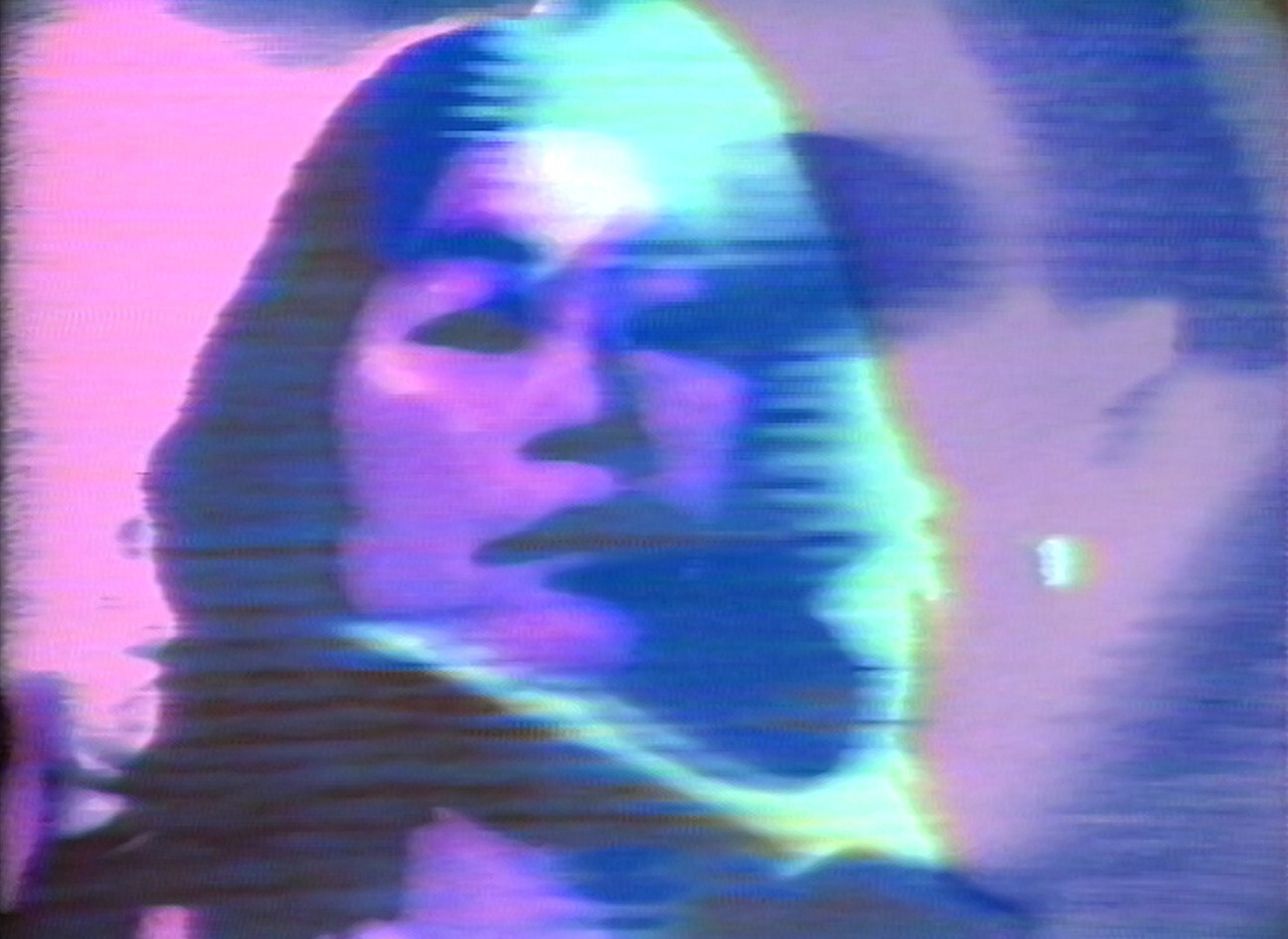

Shigeko Kubota (still), Self-Portrait, 1970-1971. Copyright: Estate of Shigeko Kubota/Shigeko Kubota Video Art Foundation.
Behind the Video Door
I travel alone with my portapak on my back, as Vietnamese women
do with their baby.
I like Video, because it’s heavy.1
Portapak and I traveled all over Europe, Navajo land and Japan
without male accompany. Portapak tears down my shoulder,
backbone and waist. I felt like a Soviet woman, working at Siberian
railway. I made a videotape called, “Europe on a half-inch a Day,”
instead of a popular travel book, “Europe on 5 dollars a Day.”
I had one summer with Navajo family in Chinle, Arizona, I made
a videotape called, “An American Family.”
Behind the Video Life
Man thinks, “I think, therefore I am.”
I, a woman, feel, “I Bleed, therefore I am.”
Recently I bled in half-inch…3M or SONY…ten thousand
feet every month. Man shoots me every night…I can’t resist.
I shoot him back at broad daylight with vidicon or tivicon flaming
in overexposure.
Video is Vengeance of Vagina.
Video is Victory of Vagina.
Video is Veneral Desease of Intellectuals.
Video is Vacant Apartment.
Video is Vacation of art.
Viva Video…
1974
Shigeko Kubota’s “Video Poem” stating her feminist engagement with video as an expressive medium was published in Video Art: An Anthology, edited by Ira Schneider and Beryl Korot (New York: Harcourt Brace Jovanovich, 1976), 286–287.